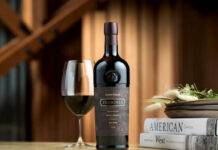Customers are craving provenance and whisky has it in spades

LOOKING around the Scottish on-trade at the moment it can feel like everyone has gone gin daft, with sales of the spirit racing skywards driven by craft credentials and customer demand for provenance.
But despite the success of the juniper spirit there’s one liquid that can lay claim to being the big beast of craft, quality and provenance.
Scotch whisky has been long associated with complex flavours and brands with heritage, and some of the firms behind the national drink reckon now is the perfect time to educate customers in order to drive whisky sales.
Ceri Lewis of distributor and wholesaler Matthew Clark reckons the way to get more customers interested in the story behind whisky is to make the spirit “more accessible”.
Scotch can only benefit from the trend for craft.
“Capitalise on the fantastic array of flavours Scotch provides and embrace the opportunities that mixed drinks and cocktails provide,” said Lewis.
With both gin and beer benefitting from a high consumer appetite for all things labelled ‘craft’, Lewis reckons whisky is in a prime position.“Scotch can only benefit from the trend for all things craft, after all it’s right up there on skill, processes passed down through generations and heritage and I am not sure that there is a spirit category that demonstrates such a range of flavour using essentially the same raw materials,” she said.
Jonathan Gillbanks, UK on-trade sales director at Whyte & Mackay, agreed that there’s opportunity for operators to cash in on whisky’s craft credentials by focusing on the spirit’s provenance.
“Emotional connections are often the driver of single malt whisky purchases,” said Gillbanks.
“We find people want to know everything about where the whisky is from, right down to the people who are making it.
“Operators can help inform purchases by staying up to date on distillery backstories, and social media is a great tool for this.”
There’s no denying the spirit that’s formed a fantastic connection with customers over the last few years is gin.
Ian Peart, on-trade channel director at Pernod Ricard UK, the firm behind whisky brands The Glenlivet and Chivas Regal, reckons on-trade operators could learn a thing or two from gin’s success and apply these lessons to help drive whisky sales.
“This [gin] growth has highlighted some focuses gin brands have put on key areas; communicating in a relevant and engaging way, differentiation and innovation of the brands, and educating drinkers on how to consume it,” said Peart.
“Operators need to apply these focuses to the whisky category to help increase sales.”
Peart said operators should make sure to “get the basics right”, educating customers in a manner that’s accessible to all.
“Something we do in the off-trade is to break whisky tasting notes down into easily remembered identities such as smooth, fruity, rich, peaty, spicy and creamy,” said Peart.
“This could easily be mirrored in the on-trade with tools such as menus and bottle plinths, making it clear for drinkers but also resulting in a clear, simple guide for seasonal staff.”
Hannah Lawrence of Douglas Laing, the firm behind specialist bottlings including Big Peat, agreed that customers want to know more about what they are drinking and said operators should put “a particular emphasis on the origin of ingredients and the production process”.
And while the whisky category can undoubtedly be complex at first glance, Lawrence reckons the key is for bar staff to take their time. “I think the trick is not to rush your customer,” she said.
“Offer a comprehensive whisky menu with tasting notes, organise your back-bar in a way the customer will understand and make sure your permanent staff are clued up on what’s on offer, and you can’t go too far wrong.
“Water and ice – and dare we say, even coke – is a personal preference, so always ask how they like to enjoy their dram.”
It’s not just different mixers and serves that can capture customers’ imaginations when ordering a whisky.
Jonathan Cornthwaite, head of whisky at William Grant & Sons, reckons there’s a “huge opportunity to get consumers to engage with whisky through food”.
“We have had phenomenal success in on-trade outlets with our Balvenie with cheese boards,” said Cornthwaite.
“A good way to encourage trial is by including whisky and cheese pairings on the dessert menu, offering customers an alternative to traditional desserts.”
Isle of Arran Distillers MD Euan Mitchell agreed that food can provide a fantastic opportunity to drive customers towards whisky. “Food pairings are an excellent way to introduce customers to a new category,” said Mitchell.
“Suggest a choice of drink next to each menu item that complements the flavours of the dish.
“Customers will appreciate your guidance and recommendations and it can help support sales.”
While there are more than a few things bar staff can reveal about Scotch that should pique interest in the national drink the key to making the most of whisky, according to Mitchell, is well trained bar staff.
“Staff training is key – staff should be knowledgeable enough to advise these customers on choices they may not have considered,” he said.
“This is especially important with whisky where features such as age, blend, region and palate are a key factor.”



















